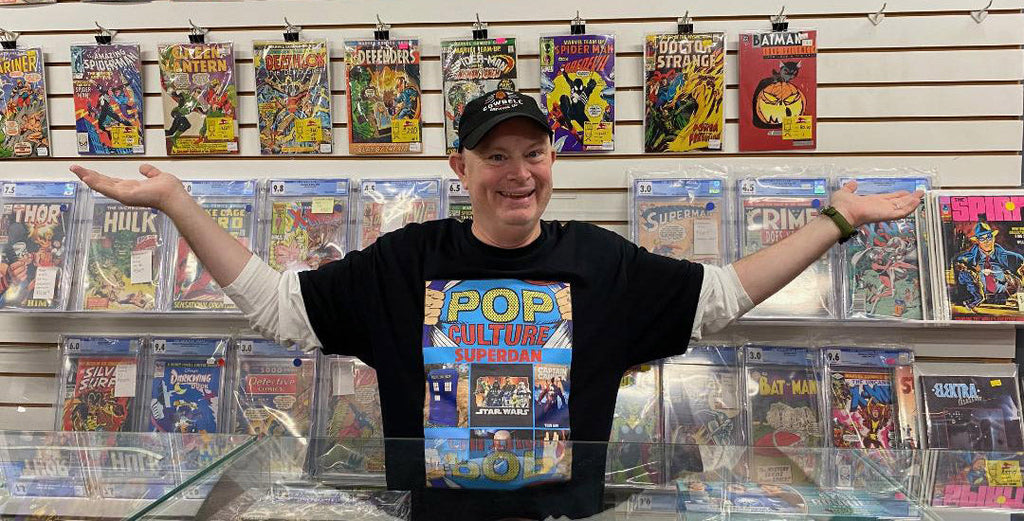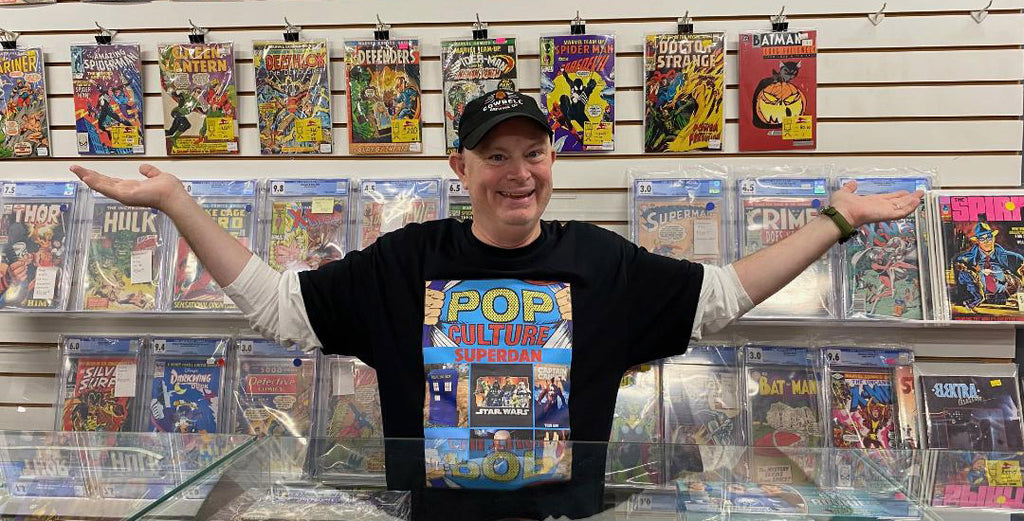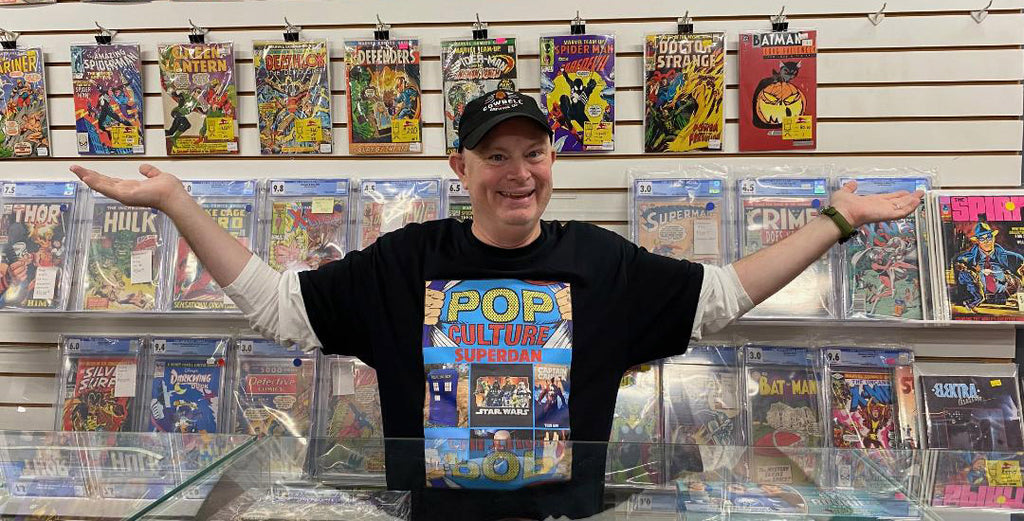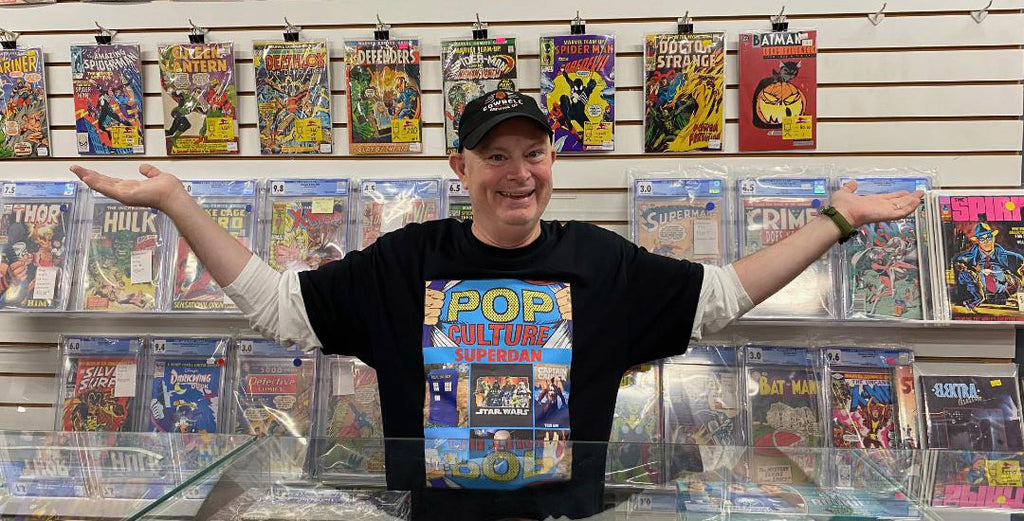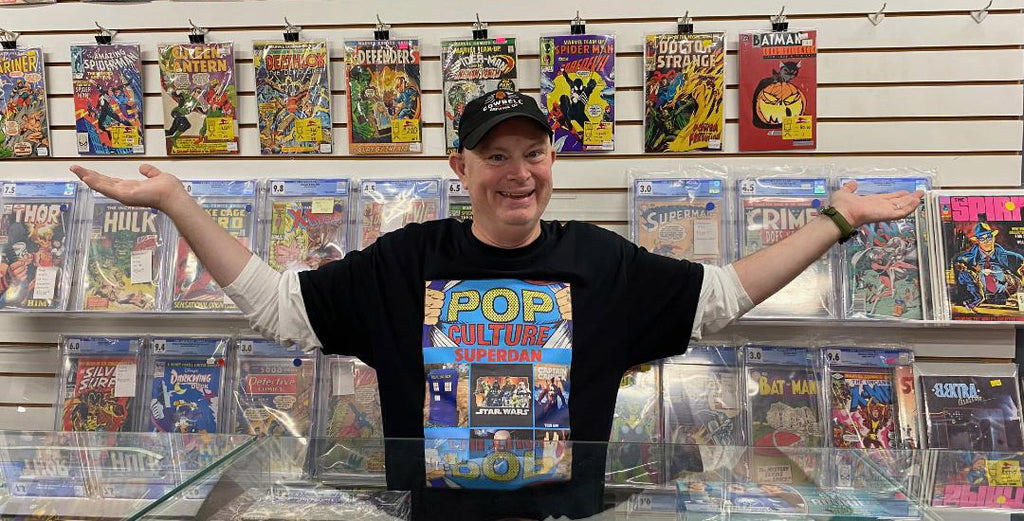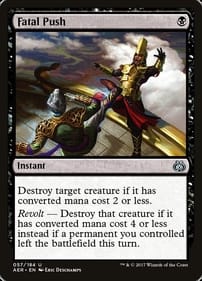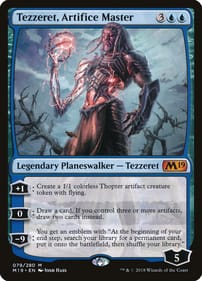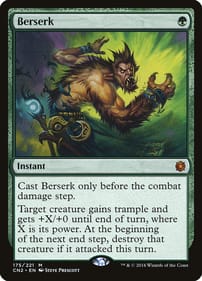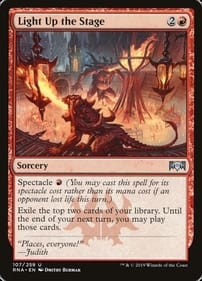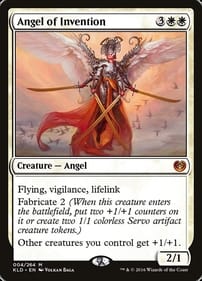It’s 1975 All Over Again
By Dan Brown There’s a calendar from 1975 on my wall. Each month has a Marvel superhero on it like Spider-Man, the Hulk, Thor and Captain America. With this apparent antique pinned to the wall,, it’s easy for me to imagine I’ve travelled back in time to the era of Gerald Ford, Archie Bunker, bell-bottom jeans, and the fall of Saigon. To be clear, the calendar I’m talking about is actually a re-issue of the Mighty Marvel Calendar from 1975. As it turns out, some marketing genius figured out that 2025 and 1975 share the same calendar dates. I'm guessing the question then became, “Why not just put out the old one again?” The resulting calendar is a slick piece of work, fashioned from sturdy cardstock and bound with a plastic spiral. (Yes, I do have a calendar fetish, I always buy several different ones for home and office.)I say it’s brilliant marketing because it represents a huge potential return on a minimal investment. Marvel already owns all the art, plus the characters featured each month have only become more popular in the intervening decades. As well, 1970s nostalgia is all the rage these days. Aided by the Mighty Marvel Calendar for 1975/2025, let’s imagine it is January 50 years ago, shall we? So what was going on back then? Here in the Forest City, Jane Bigelow was the first female mayor of London. Our nation’s economy was reeling from an ongoing energy crisis.Nicknamed “gas guzzlers,” cars were the size of boats. Compact, fuel-efficient vehicles looked to be a growth industry, yet these Japanese imports were still the subject of ridicule. In the early months of 1975, there was talk of how the motion-picture adaptation of Peter Benchley’s best-selling Jaws paperback had turned into a troubled production. Besides, who went to movies in the summer anyways? Speaking of pulpy sensations, people could still not believe that a crime family had been portrayed on the silver screen as people with regular personalities in The Godfather and its 1974 sequel. It was almost like these movies were saying criminals have a lot in common with ordinary human beings, a shocking concept. A string of dystopian sci-fi flicks mirrored the zeitgeist – when people in 1975 looked into the future, it wasn’t a pretty picture. The Star Trek animated Saturday-morning cartoon from the early 1970s hadn’t done much to spread Gene Roddenberry’s idea of a utopian future society. On the radio in early 1975, you didn’t hear Elvis Presley much anymore. The airwaves belonged to acts like Fleetwood Mac, ABBA, the born-again Bob Dylan and an upstart by the name of Bruce Springsteen. Could he be the future of rock and roll? As for comics, well, they were for kids – though creators like Will Eisner insisted comic books should be taken seriously as a form of literature, even with their cheap paper and splotchy colours. About this time in January of 1975, DC jacked the price of individual comic books up to a quarter from 20 cents. That summer, Marvel would offer a new team of Uncanny X-Men to readers, including a short Canadian mutant with metal for bones who had originally been the villain in a Hulk storyline. In the letters columns of those bygone Marvel comics, readers made their desire known: Somehow, sometime, someway, Marvel heroes had to make the jump to the big screen.Why, one correspondent even argued, Charlton Heston would make a perfect Magneto.Do you miss the 1970s? Do you wish you had been alive back then? Let me know in the comment box below! Dan Brown has covered pop culture for more than 32 years as a journalist and also moderates L.A. Mood’s monthly graphic-novel group.
The Few, The Proud, The Unproductive
By Dan BrownLet us now praise those comic creators who had a big impact on comic history despite spending very little time in the spotlight.I’m talking about your David Mazzucchellis, your Michael Goldens, your Paul Chadwicks. You may have your own favourites.What do these artists have in common? Compared to such stalwarts as Kurt Swan and Jack Kirby, they were . . . not all that productive. Which hasn’t stopped them from inspiring wildly loyal fandoms.Some of them are still active today. Once in a while.They had brief runs (that are still remembered 50 or 60 years later), they did an amazing job, they revolutionized comics. And then they more or less disappeared.Perhaps some of them had a hard time meeting the grind of monthly deadlines. No doubt some of them made more money as illustrators in other fields. For whatever reason, they found other vineyards to toil in.Oh, we young comics fans loved them. If it was up to us, they would have had their choice of assignment.Mazzucchelli we knew as the artist on Frank Miller’s Batman: Year One, which reset the Dark Knight’s origin for a new generation. The Neal Adams Batman belonged to our older brothers, but this one was OURS. The brilliance of his style was that you couldn’t tell which era this Batman came of age in. Was it the 1970s? The 1930s? The modern day? You couldn’t pin this Batman down, he was timeless.Oh yeah, Mazzucchelli also worked on Daredevil briefly, then years later came out with the graphic novel Asterios Polyp. Might he be a perfectionist, might that be the reason that prevented him from doing more?Michael Golden lit the comic world on fire with his 12-issue run on the Micronauts. It was a comic adaptation based on a toy line, and like Mazzucchelli he also created an otherworldly milieu, with exhausted heroes and truly diabolical villains. Then, a glimpse of something even more awesome: For one issue, Star Wars No. 38 in 1980, Golden showed us a vision of a galaxy far, far away with art that we actually dug.It had seemed up to that point Marvel was abusing Star Wars fans on purpose by using mediocre artists.When we got a little older, graduating to more mature stories, Chadwick spoke to our young-adult selves with his thought-provoking Dark Horse series Concrete. A book built around a superhero who wanted only to sit around and think? We were intrigued, It was as if Ben Grimm had become a philosopher.But unfortunately for us, it didn’t last. He was another creator who, it seemed, had found other things to do outside of comics. Perhaps he just lost interest.Like I said, not everyone is blessed with the work ethic of a Kirby or the endurance of a Swan or a John Romita. Not every comic creator even wants to be in the conversation.Some are destined to be excellent, then be gone. Could be it’s a blessing in disguise? One byproduct is we will never get sick of their expressive lines.Nor am I suggesting any of these talented people are snobs for finding other pursuits. Not everyone has thousands of individual issues in them, I get it.Heaven forbid they should ever be among the most productive people in the industry’s history. Because those folks get a different label: We deride them as hacks.Dan Brown has covered pop culture for more than 32 years as a journalist and also moderates L.A. Mood’s monthly graphic-novel group.
Is There Product Placement in Comics?
By Dan BrownMaybe it’s because I’m a naive fool, but I don’t ever remember seeing an instance of flagrant product placement in a comic book.I’m talking about the classic kind of product placement, the same type you see in movies or on TV where products are written into the plot of the show in return for brand exposure.(I’ll get to advertising partnerships in comics in a minute. They are a different animal.)For example, in an old episode of Big Bang Theory Raj gets a new iPhone. We know it’s an iPhone because after he and Howard unwrap the device, Raj has a conversation with Siri, Apple’s digital assistant. Not very subtle.Product placement like this would in theory be easy to do in comics. The reference could be written into a comic’s script and then the brand’s product would be drawn by the penciller.We all know Wolverine – being Canadian – loves beer, right? So in a scene in which the deadly mutant walks into a bar, he could order a Budweiser or other brand, and the artist could reproduce the label on the bottle or can in Logan’s hand. Easy-peasy, providing you can get the creative team on board with the idea.As straightforward as the process would be, it doesn’t seem to happen much. Maybe I’ve got feeble eyes, but I don’t recall much along those lines taking place in Marvel or DC Comics. There are opportunities aplenty, it’s true.Batman’s alter ego, Bruce Wayne, might prefer a certain make of sports car. Ben Grimm could make his preferences known for a specific type of cigar. Photographers love to talk about the equipment they favour, so why would Peter Parker be any different?The argument in favour of product placement in comics might go something like this: “We live in a world of brands, so superheroes having brand preferences would make them and their milieu seem more realistic. If advertisers want the exposure, publishers could use the extra revenue.”I’m talking solely about comics here. I know there’s plenty of product placement in motion pictures that feature the same superheroes. That’s a whole other column.Nor am I talking about the advertising partnerships comic publishers occasionally embark on, which are embarrassing because they’re so blatant.For example, Marvel characters such as the Hulk and Spidey were loaned out to Hostess in the 1970s to go on adventures in which the villains were all defeated or distracted the same way: By being fed Twinkies. These appeared as clearly marked ads, not part of a comic's storyline.Likewise, about a decade ago, motorcycle maker Harley Davidson signed a deal with Marvel to feature their fine wares in a series of one-shot issues. This led to odd situations in which the Avengers, instead of using the full range of their powers, including that of flight, would ride Hogs to do battle with evildoers.I did once read a Hawkeye storyline set in Madripoor in which a specific brand of credit card was name-dropped, but I can’t recall having seen anything like it since. And I can't say for sure it was the result of a deal.Perhaps the reason for the dearth of product placement in comics is publishers might have to share the fee with creators. Or maybe comic creators who consider themselves "artists" feel they’re above crass product placement.Or maybe it goes back to the traditional perception of comics being stuff for children, and therefore product placement being viewed as unfairly taking advantage of kids. Of course, both you and I know the average comic reader today is in their 40s or 50s so that argument no longer holds water.Dan Brown has covered pop culture for more than 32 years as a journalist and also moderates L.A. Mood’s monthly graphic-novel group.
Recommended Remembrance Day Reading
By Dan BrownIf you ask me, Remembrance Day should be a statutory holiday – I believe this country ought to grind to a halt out of respect for those who gave their lives so the rest of us could live in peace.And in no way do I think reading a comic or graphic novel can come anywhere close to recreating the brutality of combat. So I mean no disrespect by offering these ideas for Remembrance Day reading. Please consider these suggestions a starting point, and nothing more.Two Generals: Created by Southwestern Ontario’s own Scott Chantler, this moving book gives a grunt’s-eye-view of the D-Day landings. It’s based on Chantler’s own family history and his crisp lines don’t diminish the horrors of war. Jack Kirby: The Epic Life of the King of Comics: Not only did Jack Kirby draw many war comics, but he was also an actual U.S. soldier who landed at Normandy (in a subsequent wave). I recommend Tom Scioli’s biography because it helped me visualize Kirby’s contribution to the war effort. All Quiet on the Western Front: Wayne Vansant’s graphic adaptation of the classic Erich Maria Remarque novel pulls no punches with its detailed account of trench warfare and forays into No Man’s Land as told from the German side. Vansant is himself a veteran of the Vietnam War.The Canadian Whites: These were the wartime comics that flourished in Canada during the Second World War due to restrictions the government put on imports. Hard to believe, but our dominion had a thriving homegrown comic industry in those years. I would suggest you start with Nelvana of the Northern Lights, a collection about a female goddess who fought Nazis and also beat Wonder Woman to market.Berlin: This expansive volume by Jason Lutes depicts what was going on in the German city between the wars. The cast combines historical figures like Hitler with fictional characters and was years in the making. It opened my eyes.They Called Us Enemy: Inspired by the true story of Star Trek actor George Takei’s family, this tale of the homefront describes how Japanese Americans were sent to internment camps during the Second World War. This, after their possessions were confiscated and their businesses liquidated. There are echoes of this experience in the short comic Junban by Toronto creator Jillian Tamaki. It first appeared in the New Yorker and describes her grandfather’s parallel experience in British Columbia.Sgt. Fury and His Howling Commandos: Long before he was an agent of SHIELD, Fury – the comic one, not the one played by Samuel L. Jackson – was fighting Nazis in the pages of Marvel Comics. Any introductory collection will do, and yes, I know these comics were meant more as entertainment for boys than a serious record of how World War Two unfolded. Captain America’s earliest adventures are likewise worth a read – Cap was punching Hitler in the face before the U.S. had even been drawn into the war.Sgt. Rock: A DC anthology like Archives Volume One will give you the idea. The highlight here is Joe Kubert’s gorgeous art, which was also featured in another World War Two title from DC, the Unknown Soldier.Please consider these recommendations in the spirit they're offered. Every one of us has to begin learning about war somewhere, and for me it was in the pages of comics like these.Dan Brown has covered pop culture for more than 32 years as a journalist and also moderates L.A. Mood’s monthly graphic-novel group.
Sentinels is Dark and Looks to Get Darker
By Dan BrownSentinels No. 1 has an intriguing premise, but man is it dark. With such a grim start, I’m not sure where the new series will go from here. Can it get any more dystopian?Billed as Marvel’s token “bad-guy book” among the company’s 18 (by my count) X-titles, it features a cast of military types who have been implanted with sentinel technology. They are machine/human hybrids whose goal is to forcefully corral mutants, then bring them to prison.In keeping with the dystopian theme, the prison is housed in the basement of Professor Charles Xavier’s former school for gifted children i.e. mutants. But where Xavier’s dream was to find a way for mutants and humans to co-exist, the sentinels are programmed – and kept in line with mood-regulating drugs – to use violence to bring them in. It’s a world turned upside-down.This all takes place in Marvel’s post-Krakoa universe. Last time I checked in with the X-Men, they were living pretty much as immortal gods on the sentient sanctuary island. I wondered what Marvel was going to do with its mutant characters once that storyline ran its course, and now readers are beginning to find out. (Marvel has said it will be concentrating more on solo titles featuring the likes of Wolverine and Storm as the mutants reintegrate into society.)Not to be trusted with their genocidal instincts, the giant sentinel robots themselves have been powered down in favour of these cyborgs. The danger for the bad guys, who have code names like Lockstep, Drumfire and Sawtooth, is that the cybernetic implants have a tendency to take over their minds and bodies completely, a process called “full grafting” which destroys their remaining humanity.The issue is a finely crafted comic, with art by Justin Mason and writing by Alex Parknadel, creators whose work is new to me. Let’s just say the result is not something Jack Kirby and Stan Lee would ever have dreamed up.There’s also friction between the civilian who pulls the team’s strings, the mutant Lawrence Trask, and the military commander on the ground. It’s reminiscent of what happens in pro sports when a coach can’t get along with his or her general manager.The issue starts with the team dropping into an isolated Russian village to take the homicidal mutant “Omega Red” into custody. Naturally, things don’t go according to plan.There are dark hints as the issue unfolds about how the incarcerated mutants are being treated, which seems to be even worse than the sentinels themselves. They operate in a world in which there are no clear moral lines between human and mutant or organic and mechanical.Some of the team members rationalize their missions by stressing that all they are is hunters – what is done to the captive mutants once they have been put into a cell is none of their business.We also get a glimpse of Trask’s motivation when he recalls the story of two neighbouring villages in thirteenth-century England during a wolf cull. Once the animals victimizing the two communities have been dispatched, he explains, the residents turned on each other.Trask reasons that his role in backing the sentinels is to keep humanity and mutantkind in a kind of equilibrium or stasis so they don’t massacre the other. The sentinels are the “necessary monsters” who keep a “fragile peace” between humans and homo superior. Speaking of Magneto, he doesn’t appear in this issue, but his former ally the Blob does. There’s a different archvillain from the X-Men’s past who graces the story’s final page. You’ll never guess who it is, but I didn’t see his appearance coming. Dan Brown has covered pop culture for more than 32 years as a journalist and also moderates L.A. Mood’s monthly graphic-novel group.
Colin Kaepernick Not Making Friends with AI Comics Venture
By Dan BrownYou may know Colin Kaepernick as the NFL quarterback who struck a blow for civil rights.But now the former football player wants to revolutionize the comic industry. And that’s not a good thing.Sports fans are familiar with Kaepernick because eight years ago he took a knee during the American national anthem at a San Francisco 49ers game to protest police brutality and racial injustice. More kneeling ensued, as well as much controversy.He came to the attention of comics fans this summer when he announced the founding of his artificial-intelligence company, Lumi, which aims to “free creators and democratize storytelling.”Sounds great, right? The unsaid part is that he wants to replace work done by comic artists and writers with images and words generated by an AI. This has not endeared him to the comics community.It probably didn’t help his cause when he made his intentions known in a press release that sounds like it was generated by a robot.With $4 million in funding behind it, Lumi is a “groundbreaking platform that empowers creators by providing them with the tools needed to independently create, publish and merchandise their stories both digitally and physically.”How will this be done? By putting the human creators who would have otherwise created these stories out of work.I haven’t done a survey of people in the field, but I’m not currently aware of any comic creators who were looking for this kind of shortcut. “By leveraging advanced AI tools, Lumi enhances the creative process, allowing creators to focus on bringing their stories to life, while the platform handles all of the logistics,” the statement adds. The company boasts this will make every creator into a Walt Disney. But whatever you think of Disney’s labour practices, he at least employed actual human animators.It seems Kaepernick has himself run up against “gatekeeping” in the comic industry.“Currently, a few large corporations dominate the narrative landscape, limiting the diversity of stories told. Lumi aims to open the funnel, enabling anyone to access storytelling superpowers, ultimately fostering a more inclusive and equitable world.”The reality, of course, is that the internet has made the barrier to entry ridiculously low. For better or worse, all you need to be a comic creator in 2024 is a computer and an idea. And anyone who has been paying attention to the graphic-novel market over the last dozen years also knows there are now graphic novels and comics for almost every taste. Besides, AI art and writing is just . . . weird.Granted, I haven’t seen the finished product of a comic produced with the help of Lumi. Who knows, it might be better at drawing than all the other AIs out there.But even if it’s the best AI art ever invented, it still can’t match the creativity of the human mind. You could argue that it’s the flaws, the human element, that make comics attractive to human readers in the first place. Someone like John Porcellino is not a master illustrator, but his simple images are the perfect vehicle for making the emotional points he wants to make. The results are comics that verge on the poetic.Nor am I against the use of technology in the making of comics. If it makes drawing or writing easier for a human, go for it, but the comic creators I love don’t give up those functions entirely to a machine.“Creators today face significant challenges, including exploitation and lack of independence,” the statement claims. “Lumi addresses these issues by providing an end-to-end solution for storytelling leading to more financial stability, creative control, and ownership of their work.”Yup, sounds like the comic biz to me!Oh, and at the risk of belabouring the point – there was and will only ever be one Walt Disney!Dan Brown has covered pop culture for more than 32 years as a journalist and also moderates L.A. Mood’s monthly graphic-novel group.


